Why You Shouldn’t Mix Long Blog Posts with Short Blog Posts

The length of a blog post is somewhat strongly correlated with the quality and value of that post. Short blog posts rarely have space to truly dig into a topic, answer a question, provide concrete examples or sources, or otherwise bring unique value to the table. You can only skim the surface of a subject with short articles, but with longer and more detailed ones, this is less likely to be the case. Search algorithms love patterns like these.
This is not to say that length is the only factor in play; just that longer posts have more room to breathe, infuse themselves with quality, and provide unique value.
Uniqueness is the key point here. There are virtually no topics left untouched online today. You will have to compete with someone, and statistically, that someone is likely writing blog posts of at least 1,500 words. If you use a short blog post to answer the question, how can you provide unique information that they don't, when they cover it in more detail using more space? Moreover, how can you expect to compete?
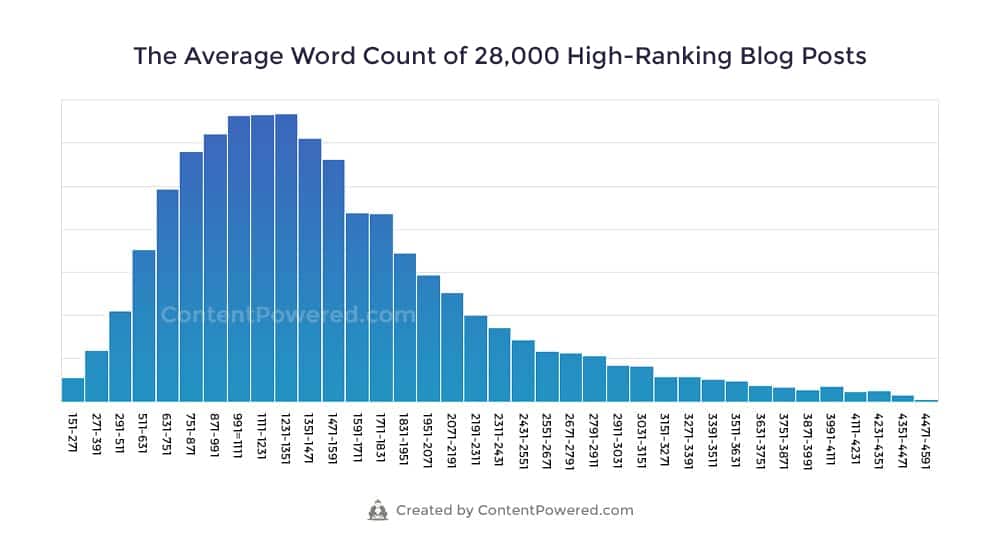
All of this is to say that length and quality are fairly closely intertwined, though it's certainly possible to write a long blog post without quality. I wrote a more detailed analysis of short-form blog posts over here if you'd like to read that as a foundation for this discussion.
Let's put forth two possible scenarios you might run into.
- Your blog is old. Back when you started, you wrote posts that usually averaged 1,000 words, sometimes less. These days you go deeper and cover more, and write 2,000 or more, but those old posts are still there in the back catalog of posts on your site.
- Your writing is inconsistent. You don't believe in word count, so you simply write as much or as little as you feel is necessary to cover a topic. Sometimes that's 2,000 or more words, sometimes it's under 1,000. Either way, it's variable, and you end up with a mixture of long and short content on your site.
I'm here to say that there's one problem with both of these scenarios: Google doesn't like it.
 30 Second Summary
30 Second Summary
You need to write longer blog posts if you want to rank well in search results. Short posts rarely have enough space to fully cover a topic or add unique value. When you have both short and long content on your site, your overall quality rating goes down in Google's eyes. You should either improve your short posts by adding more depth and detail, or remove them entirely if they don't have any valuable backlinks or traffic. Regular content audits will help you maintain high quality standards.
What Google Says
Now, Google isn't going to penalize your site just for having some short content on it, at least, not in the traditional sense of penalty. What happens is that content factors into the overall quality level of your site. Through the power of averages, the rating for your entire site is brought down. It's not a penalty, it's just a reflection of your site as a whole.
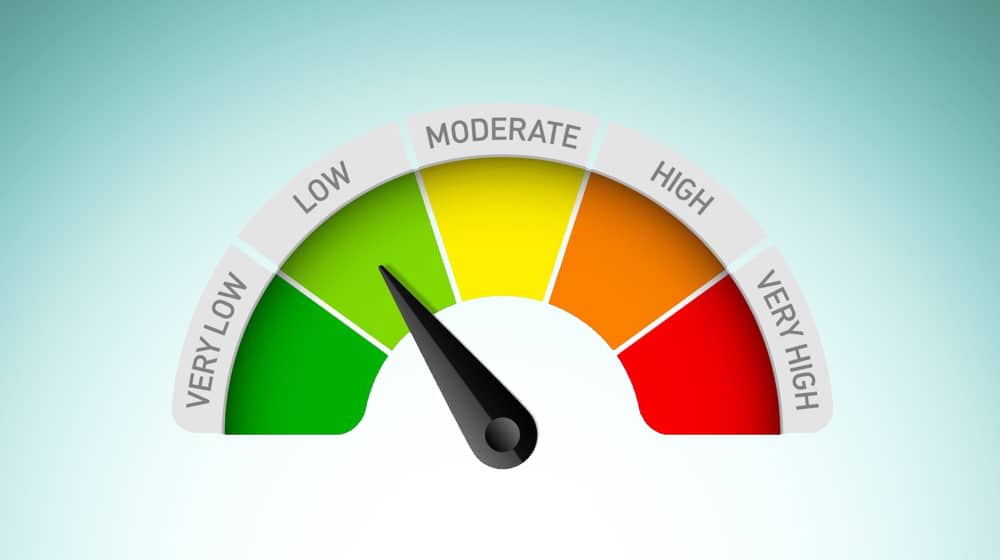
Think about it this way. If you have three possible ratings – poor, good, great – to rank your content, each piece of content on your site will be given a rating. Let's say you have 20 blog posts or pages on your site. Of those pages, 10 of them are shorter or older blog posts that don't really dig into their topics and just give surface-level observations. These are ranked "poor". Then you have 10 which are newer, deeper, more detailed, and can be considered high-quality content. These are ranked "great". What is your overall site rating?
Averaging out 10 "poor" and 10 "great" means your site, overall, is merely "good". That would be fine, except your site is competing against hundreds or thousands of other sites, and many of those sites have focused on only producing great content. Their content quality rating may be better than yours in the eyes of search engines.
Google's algorithms are, in actuality, significantly more complicated than this, of course. I am dramatically simplifying the situation for the sake of easily conveying the idea. Still, I'm not wrong at the core of it.
John Mueller, one of Google's primary spokesmen, often mentions this in his web meetings and videos.
"Can low-quality pages on a site affect the overall authority? Yes. Well, I guess it all depends on how you define authority but in general, when our algorithms look at a website, across the board, overall, they do look at individual pages as well. And if there are a bunch of low-quality bad pages on a site then that does affect how we view the site overall. […] That's something that, from my point of view, if you're aware of low-quality pages on your site, then that's something I'd try to fix." - Google Search Central
That video is old, and if anything, in the years since, Google has gotten better at contextualizing content. Core parts of the algorithm, including Panda, analyze content and give it context all the time.
The way I think of it is that older content like that is like a weight around your neck. Your good content can carry your site, and there are plenty of examples of big-name sites that have archives full of trashy content. For most people, though, setting that weight down will allow you to climb that much faster, that much higher.
What Should You Do?
The first step to solving a problem is recognizing you have a problem. I'm guessing that plenty of people reading this might not even realize the scope or extent of the problem on their sites. Sometimes it can be easy to deceive yourself into not recognizing how many low-quality pages you have. More often than not, many webmasters have content that is plagued with fluffy nonsense, inaccuracies, grammar errors, or even plagiarized content, which a bit trickier to audit across hundreds or thousands of pages.
Thus, step one is to perform an audit of your entire website. Specifically, you're going to be looking for two things:
1. Pages that do not meet modern quality standards and are indexed. Old blog posts are the most common, but indexed landing pages and other forms of thin content can be a problem as well.
2. Pages that are blank, system-generated, or otherwise low quality that you didn't intentionally create.
The second one is particularly insidious because you might never know these pages exist unless you look for them. Worse, you might have turned them off at some point in the past, but a plugin configuration change could bring them back. I wrote about one instance of this regarding Yoast SEO a while back.
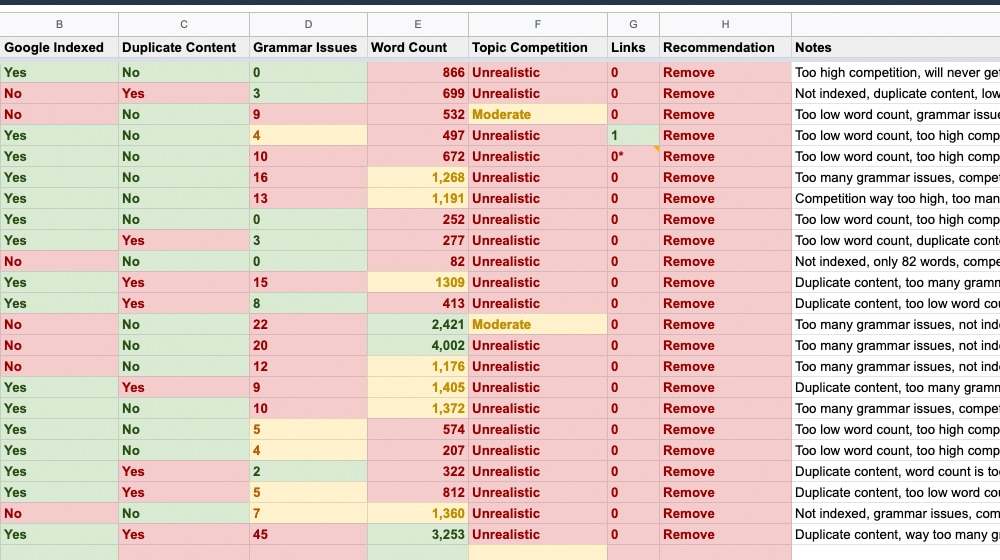
How do you look for these pages?
The simplest way is a site search. Simply go to Google and type in "site:yoururl.com" and see what comes up. Skip a few dozen pages back and see what's lurking in the background.
Of course, this method doesn't quite work if your site has thousands or tens of thousands of blog posts, or a lot of non-blog content (like individual product pages). There are sites out there with millions of indexed URLs, after all.
For larger sites, you can use scraping tools to get a list of indexed URLs. Screaming Frog is generally my go-to recommendation for scraping.
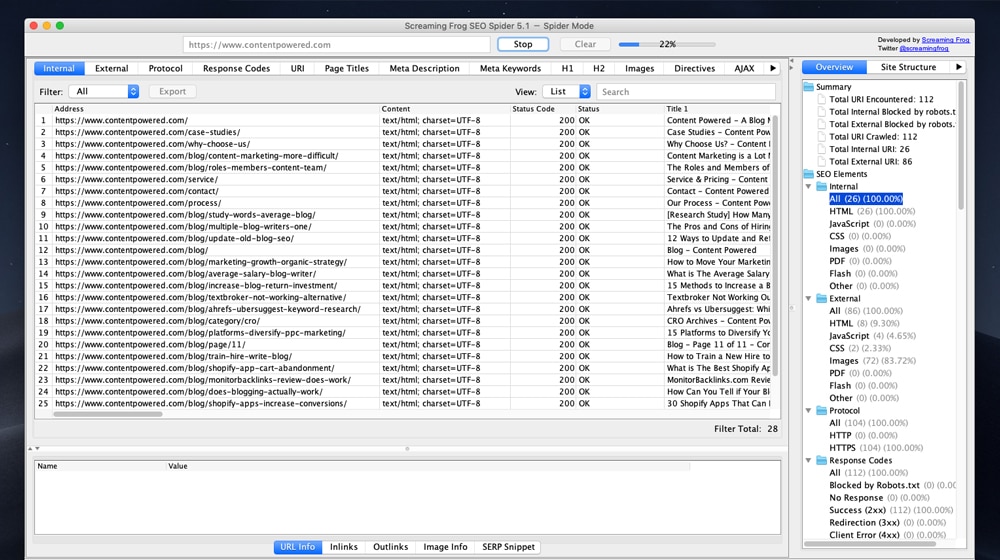
Luckily, the system pages are an easy decision to deal with. Just get rid of them. If you can delete them, great. If you can't, you can noindex them, which will remove them from Google's index and thus their calculations for your overall site quality.
Low-quality blog posts are a trickier problem to deal with. When you encounter those, you have a decision to make.
Dealing with Low-Quality Blog Posts
When you find low-quality blog posts on your site, whether they're simply not great or just old, you want to deal with them to improve your overall site quality. The question is, how should you do it?
The recommended way, according to Google, is to boost the quality of that old content. Old content that is already indexed is a resource, and if you can boost the quality of that content to get it to rank, additional factors like the age of the page can help it thrive. John Mueller has even said that the best approach, according to Google's search engineers, is to boost the quality of old content.

Unfortunately, there's no easy way to do this. You need to examine each post on a case-by-case basis and determine what action needs to be taken, and you need to take the time to write fresh content to add to the post. Often, this means revamping the whole thing. It takes a while!
Old content can be improved in a few different ways.
- You can write more to add to the post, using the original post as a core concept or basic outline to expand. It can be difficult to take a single 500-word post and turn it into 2,000 words, but it's possible, particularly if the topic can support it. I recommend looking for side topics to expand, points to create and justify, and core points to make.
- You can group several posts on similar topics, merge them into one post, and redirect the original URLs to the new central URL. The redirect is important here, so you don't accidentally run into duplication issues for covering the same topic several times.
- You can look for more modern coverage of the same topic, and redirect the old post to the new one, removing the old content in the process. When you've been running a blog for years, it's easy to forget what you have and haven't covered, especially if you don't have a running database of all of your content. Removing/redirecting the old version to a version that you've covered more recently is a wise move here.
- You can look to old blog comments and address the questions and concerns raised in those comments. Of course, this requires your site to be popular enough back when the content was posted to receive any comments, and for those comments to be relevant enough to use as a jumping-off point.
When you have hundreds or thousands of pages to address, it can be tedious, time-consuming, and expensive to do any of these. Often, the benefit you get from it is marginal enough that it's not entirely worthwhile, anyways.
This is why I like to promote a content audit first. Rather than deciding on an individual basis what to do with each piece of content, file each piece of content into a class. I typically use three factors to judge the latent value of a post:
1. Does the content have any backlinks that are valuable to keep around? Dormant links from high-quality sites are good; links from Chinese content aggregators are not.
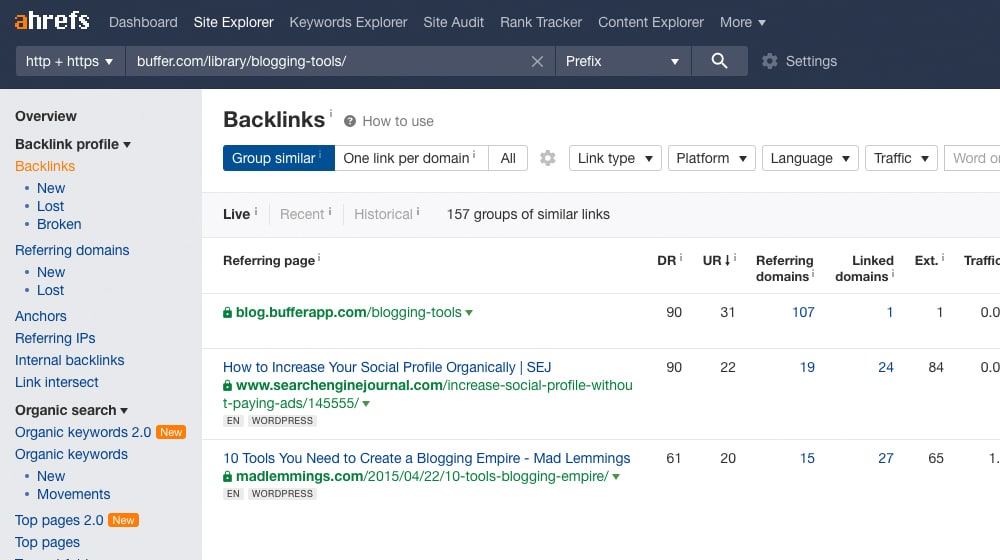
2. Does the content have any lingering traffic? It's highly unlikely to be the case, but if one of your old low-quality posts still gets the occasional hit from Google search or social media shares, it's worth keeping around.
3. Does the content have any inherent value? Are there core phrases or points you made that you want to keep?
If you answered yes to any of these questions, the post is probably worth doing something with to keep it alive. Conversely, if you answered no to all three questions, the post probably doesn't have any value to make it worth keeping.
The content you want to keep can be addressed in the ways I listed above.
The content you don't want, meanwhile, can simply be deleted. Simply removing the content is fine, though Google may keep it in the index for a while in case it comes back from its 404 status. To make it more permanent, use a 410 GONE response to let Google know right away that it's not coming back.
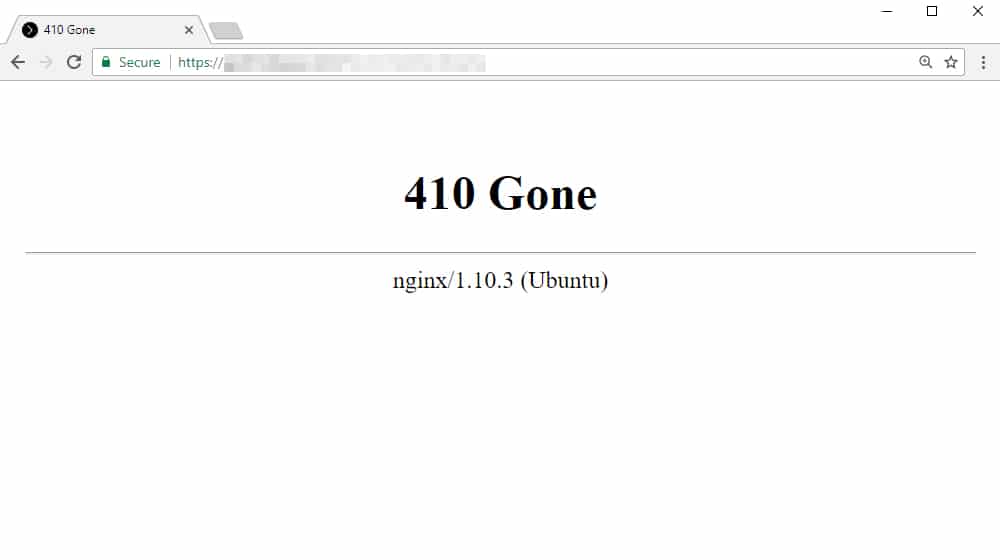
If you're worried about taking a hit due to a swatch of content suddenly disappearing, I can tell you from personal experience that's pretty unlikely. Chances are much greater that you're going to see a little fluctuation, before settling at a higher overall ranking because your average site quality level is now higher.
From there, of course, you can offset the loss by creating new content (or hiring a content marketing agency to create it for you) to replace what you nuked. A higher floor means a better position to use to climb even higher, and that's always a good thing.

As a closing statement, I'd also strongly recommend that you set up a schedule of auditing your content, so it never gets that bad again. Google's standards are constantly changing, and while they focus on more than just content quality, even those standards rise over time. Not to mention, your competition is constantly increasing as your competitors are refining and improving their processes over time. You have to keep raising the bar, or else you'll be surpassed.
Are you considering a strategy where you mix content with different lengths and quality? Do you have any questions for me about this strategy? Did I leave anything out? Please share with us in the comments below!



 30 Second Summary
30 Second Summary



March 16, 2021
Great info here. I keep trying to talk my boss out of doing this, it doesn't seem like it would be the best strategy.
March 25, 2021
Hi Missy! Show him this article! It's a pretty popular strategy which is why we decided to write about it, but once you understand how search algorithms work, it doesn't make sense to mix the quality of your content.
March 25, 2022
Oof... We've been doing this strategy for quite some time but I don't think it's too late to stop now. This is eye-opening. Thanks!
April 29, 2022
Hi Robert!
No worries at all - it's a popular strategy.
People want volume and quality, but it's expensive to have a high volume of content and maintain quality, so it seems logical to mix both.
I think that people should remove quantity from the equation altogether. Content quality is too important to play around with mixed content types; you want both search engines and visitors to know what to expect from your future posts.
Your analytics and long-term performance will thank you 🙂